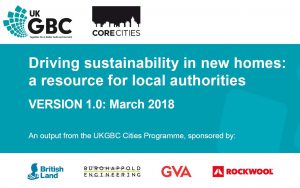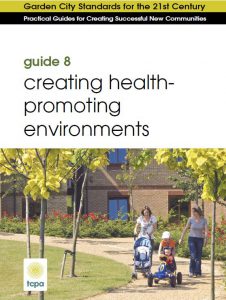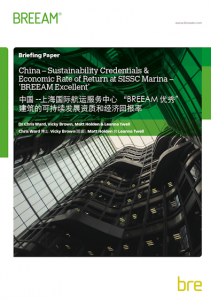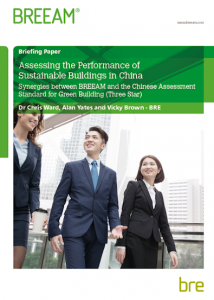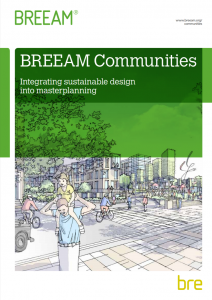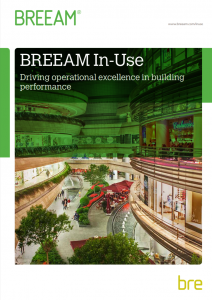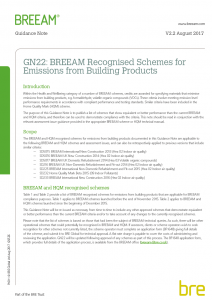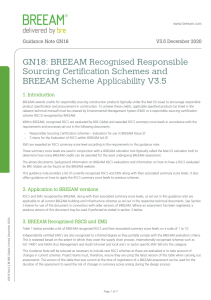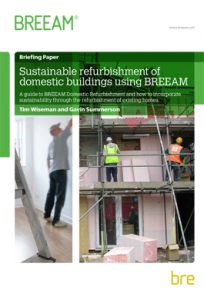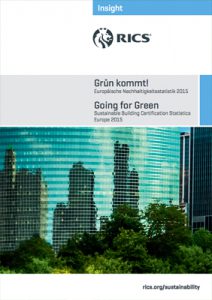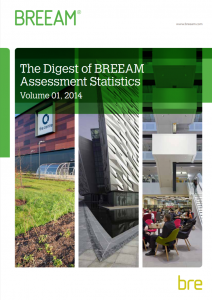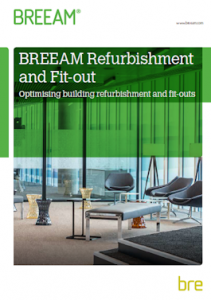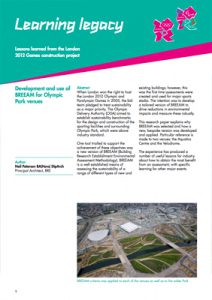Greening the Built Environment
The Benefits of Selecting Ecological Options
This briefing paper summarises a variety of ecology-focused alternatives to standard commonly specified built environment solutions and their potential associated sustainability benefits. It aims to highlight the relevance and availability of more ecologically sensitive options to standard specification solutions and so encourage the investigation of viable alternatives for projects, developments or assets. Its purpose is to help inform clients, developers and project teams making design and specification decisions for building or infrastructure developments, as well as landlords and facilities / asset managers making management, maintenance, refurbishment or retrofitting decisions.
BREEAM Professionals
A guide to understanding their role
This guide outlines the roles and responsibilities of the Assessor, Advisory Professional and Associate, and the important part they each play in the successful application of BREEAM and, where applicable, the Home Quality Mark. The guide has been published to assist clients, project teams and other stakeholders in understanding the value, purpose and cross-over of each role throughout the assessment process.
Current version: 0.0, published May 2018
Driving Sustainability Standards in New Homes
A resource for local authorities
This playbook is the output of a UKGBC collaboration and has been designed for local authorities (planning and development/housing delivery agents) across England to provide consistency and drive ambition in the delivery of much needed sustainable, quality new homes. BRE have supported this project which:
- clarifies the current legal and policy context;
- provides guidance in respect to carbon emission reduction and overheating risk;
- advocates the adoption of our HQM (and other tools) as effective means of performance assurance; and
- provides insight into viability modelling and its possible future direction
It is an industry endorsed and legally sound reference point that should give Local Authorities the confidence to push standards and adopt HQM as one of its tools to drive performance delivery. Overviews and further info can be found at BRE Buzz: Sustainability in New Homes and the UKGBC website as part of their Core Cities Programme
TCPA Practical Guides – Guide 8: Creating health promoting environments
The notion of Garden Towns/ Villages has gained momentum in recent years in response to the UK’s housing shortage. As the first Garden Villages begin to take shape with the Government’s support, many are concerned that in creating these new places quantity may be prioritised ahead of quality. In response to such concerns and with the support of BRE, the Town and Country Planning Association (TCPA) has produced a suite of guidance with practical steps for creating successful new communities. The most recent publication of this series, Guide 8, sets out how new Garden Cities should be designed to promote the health of their populations. TCPA refers to BREEAM and Home Quality Mark (HQM) in the Guide as tools that can help implement and measure health and wellbeing elements in design and construction of masterplans and building.
China – Sustainability Credentials & Economic Rate of Return at SISSC Marina – BREEAM Excellent
Shanghai International Shipping Service Center’s (SISSC) development on the Huangpu River in Shanghai aims to set a new standard in China for green, low carbon, smart and highly efficient buildings.
The development has pioneered the use of BREEAM in the Chinese market in order to achieve these aspirations. The development includes the first building in China to achieve BREEAM certification at both design and post construction stages. This office building, known as Building 17, is formed of twin towers comprising 13 floors (including 3 floors underground) and has a total floor area of approximately 25,000 m2. It achieved a BREEAM ‘Very Good’ (three stars) rating at the design stage assessment, and an ‘Excellent’ (four stars) rating at the post construction stage assessment. This case study paper provides an overview of how BREEAM was used to increase the sustainability benefits and value of Building 17.
Assessing the Performance of Sustainable Buildings in China
Synergies between BREEAM and the Chinese Assessment Standard for Green Building (Three Star)
This document sets out the areas where Three Star requirements and evidence align with those required under the BREEAM International New Construction 2016 standard. It provides assistance and guidance for those seeking to obtain a BREEAM rating alongside a Three Star rating by setting out the areas where evidence prepared to meet Three Star can be used to help demonstrate compliance under BREEAM.
The synergies identified in this document can be used to achieve significant reductions in cost and time in the assessment process where both Three Star and BREEAM assessments are being carried out. Click on the cover image to the right to download the English language version.
BREEAM Communities
Integrating Sustainable Design into Masterplanning
BREEAM Communities is a way to improve, measure and certify the social, environmental and economic sustainability of large-scale development plans by integrating sustainable design into the masterplanning process.
By encouraging collaboration early in the process developers can achieve better outcomes for sustainability whilst building consensus with key partners. This can reduce costs by avoiding the need to rework designs and plans at later stages. BREEAM Communities aligns to the key stages in the planning process and makes use of the studies and strategies normally done for planning. By extending the established BREEAM methodology to masterplanning, BREEAM Communities provides a credible process to measure the sustainability of development plans.
BREEAM In Use
Driving operational excellence in building performance
BREEAM In-Use is an online, international, environmental assessment methodology for independent, third-party assessment and certification of a building’s operational performance.
The methodology allows for a separate assessment of asset performance, building management and occupier management, assisting investors, owners and managers in driving efficient and effective building management and operation practices.
Indoor Air Quality in BREEAM
BREEAM Recognised Schemes for Emissions from Building Products (GN22)
Within the Health and Wellbeing category of a number of BREEAM schemes, credits are awarded for specifying materials that minimise emissions from building products, e.g. formaldehyde, volatile organic compounds (VOCs). These criteria involve meeting emission level performance requirements in accordance with compliant performance and testing standards. Similar criteria have been included in the Home Quality Mark (HQM) scheme.
The purpose of Guidance Note 22 is to publish a list of schemes that show equivalent or better performance than the current BREEAM and HQM criteria, and therefore can be used to demonstrate compliance with the criteria.
Current version: v2.5, published Sept 2018
Responsible Sourcing in BREEAM
BREEAM recognised responsible sourcing certification schemes (GN18)
Responsible sourcing considers a wide range of sustainability issues across entire supply chains, and by doing so encompasses various elements of resource stewardship, corporate responsibility and sustainable procurement practice.
Within BREEAM responsible sourcing is assessed by looking at the responsible sourcing credentials of products using responsible sourcing certification schemes (RSCS) that have been evaluated by BRE.
Visit our dedicated page on responsible sourcing in BREEAM to read more, view the RSCS schemes recognised in BREEAM and the criteria for evaluating them.
Sustainable Refurbishment of domestic buildings using BREEAM
A guide to BREEAM Domestic Refurbishment and how to integrate sustainability through the refurbishment of existing homes
The purpose of this guide is to advise professionals on how to sustainably refurbish a domestic property in the UK. The guide covers the key aspects of the refurbishment process and outlines how sustainability issues can be considered through every step of the way.
The guide also covers issues to consider when planning the project, issues that may be specific to the site, such as flood risk, as well as opportunities that should be considered for individual project types ranging from the extension of a property to re-roofing, installing new windows or electrical and water fittings.
Going for Green
Sustainable Building Certification Statistics, Europe 2015
Over the last few years sustainability moved to mainstream in the real estate industry with an emerging status exceeding the initial certification of only highlighted development projects with green building labels.
The economic impact is reflected in the marketplace. For major cities in the European Union the share of certified building space in the total letting statistics has increased rapidly, based on rising certification numbers within the durable building stock.
The Digest of BREEAM Assessment Statistics
As a leader in the drive for a sustainable built environment since its launch in 1990, BREEAM has contributed much to the strong focus on sustainability in building design, construction and use that now exists in the UK.
For the first time this publication presents a real picture of BREEAM take-up, from humble beginnings founded on principles that still hold today, to an internationally recognised and applied methodology. The data presented and trends highlighted should be viewed as more than just numbers on the market penetration of BREEAM. They are an increasingly valuable bank of knowledge that reflects the degree to which the buildings we design, construct, operate and occupy are sustainable and therefore lower risk, higher value assets.
Sustainable refurbishment of heritage buildings
How BREEAM helps to deliver
This briefing paper will help readers to understand the levels of environmental performance that can be achieved in heritage buildings – i.e. listed buildings and buildings in conservations areas. For these types of building there can be several inherent restrictions which limit the potential improvements that can be delivered.
This paper provides an overview to planners, owners and aspirational designer on ways to achieve challenging BREEAM targets for such projects. In addition, BREEAM assessors and Accredited Professionals can use this information in providing appropriate advice to their clients when seeking BREEAM ratings in heritage buildings.
BREEAM Refurbishment and Fit-Out
Optimising building refurbishment and fit-outs
The BREEAM Refurbishment and Fit-out standard has been created to enable the assessment of sustainable refurbishment and fit-out of existing buildings that aspire to minimise the environmental impact that occurs during the refurbishment and fit-out design and implementation works.
This brochure introduces the Refurbishment and Fit-Out scheme, describing its benefits and how it works.
Development and use of BREEAM for Olympic Park venues
When London won the right to host the London 2012 Olympic and Paralympic Games in 2005, the bid team pledged to treat sustainability as a major priority. The Olympic Delivery Authority (ODA) aimed to establish sustainability benchmarks for the design and construction of the sporting facilities and surrounding Olympic Park, which were above industry standard. One tool trialed to support the achievement of these objectives was a new version of BREEAM.
This research paper explains why BREEAM was selected and how a new, bespoke version was developed and applied. Particular reference is made to two venues: the Aquatics Centre and the Velodrome.
Videos
The role of the BREEAM Assessor and AP
How to get an assessor onboard
What the assessor needs from the client team
The no.1 tip for new build projects
Five things to do at the start of a project
.



